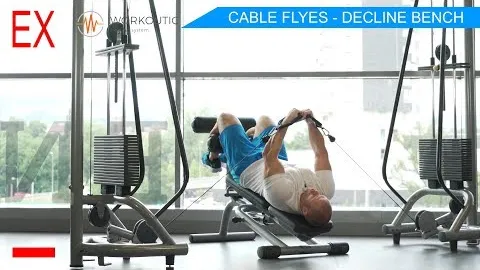
If you are looking to build a strong and well-defined chest, the cable fly decline bench exercise should definitely be a part of your workout routine. This exercise targets the pectoralis major and minor muscles, which are responsible for the horizontal adduction of the shoulder, commonly known as bringing your arms together in front of your chest.
The cable fly decline bench exercise combines the benefits of both a decline bench and cable fly exercise, offering a unique and effective way to target your chest muscles. By performing this exercise on a decline bench, you maximize the activation of your lower chest muscles, which helps in achieving a well-rounded and balanced chest.
To make the most out of your cable fly decline bench exercise, keep the following tips in mind:
While the cable fly decline bench exercise is generally safe, it's essential to keep the following safety precautions in mind:
Incorporating the cable fly decline bench exercise into your chest workout routine can greatly enhance the strength and aesthetics of your chest muscles. By targeting the lower chest muscles with this exercise, you can achieve a well-proportioned and sculpted chest. Remember to prioritize proper form, control the movement, and warm up adequately to get the most out of this exercise. Happy training and enjoy the results of your hard work!
If you're looking for a gym, fitness club or yoga studio, you've come to the right place.
You can find information about gyms in your area. Browse catalog of gyms and find gyms with classes which are you looking for.
On gym page you can find simple information like address, phone or website. You can find list of available classes. You can check availability of personal training or small group classes. On place page you can also see information about open hours.
You can find gyms near you with amenities, courts, studios and equipments.
Use our map to find gym at your city or district.
In Gym Navigator you can find list of exercises with movies for many body parts.
You can browse exercises catalog and find exercises the best of you.
You can also find exercises grouped into workout plans, which you can use to improve you body. Each routine show you exercises one by one and give you possibility to count you progress and count down rest time.